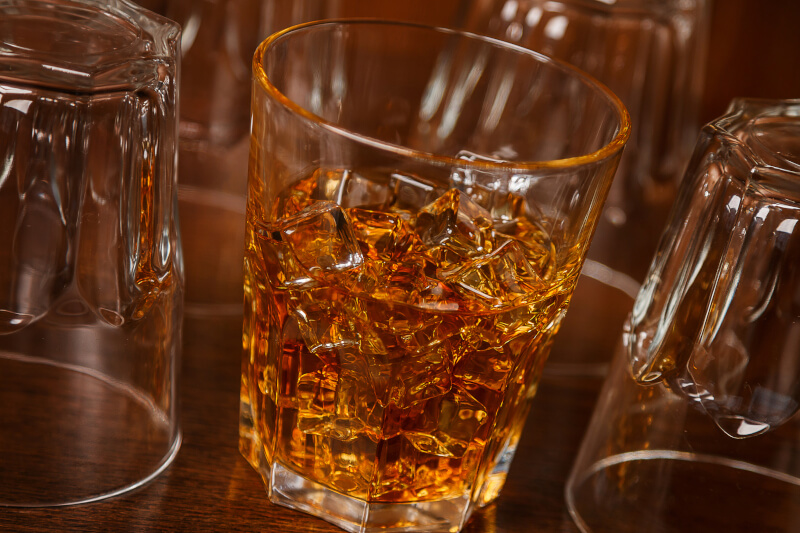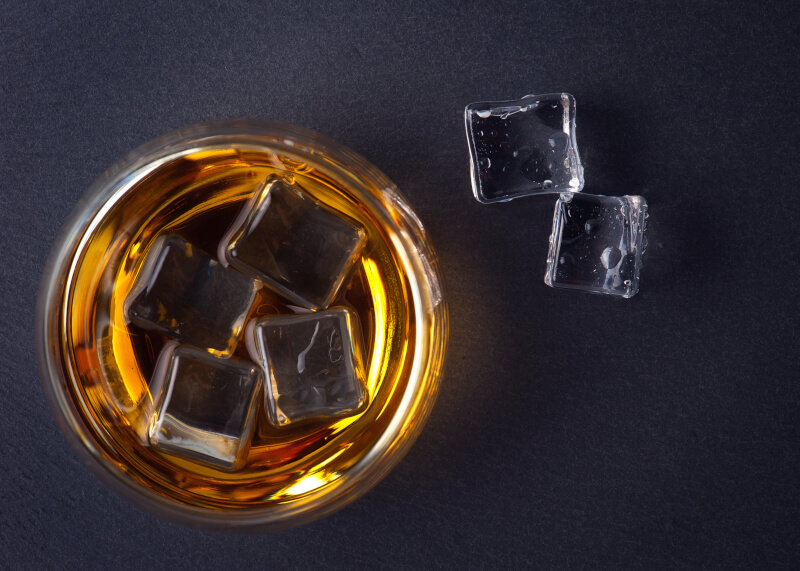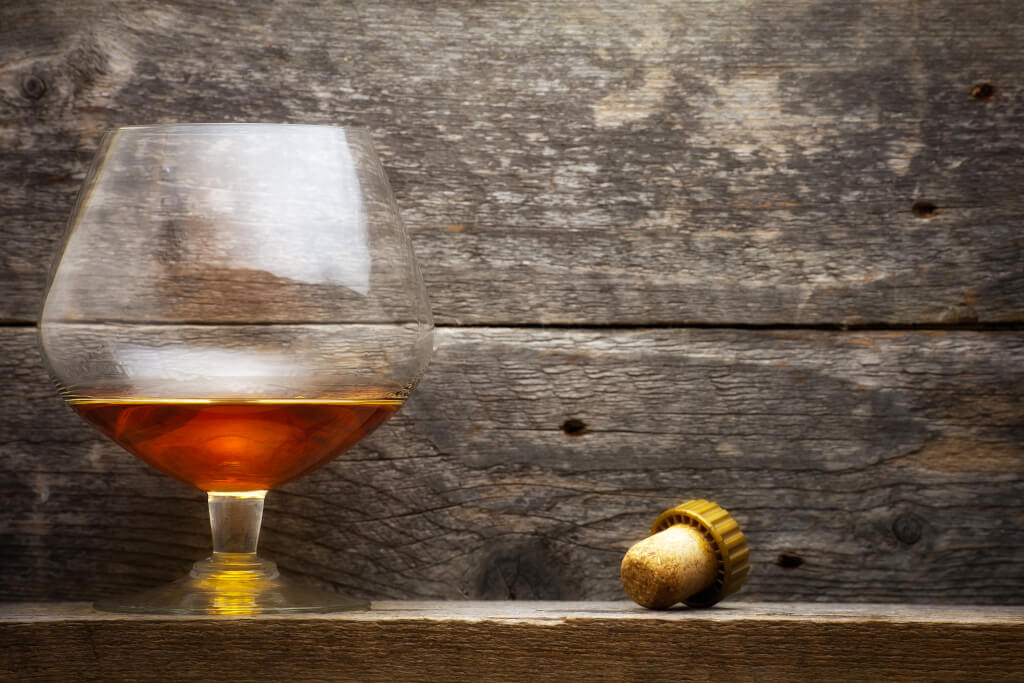Whiskey is a dance between time and grain, distilled in the barrel, where years of aging impart a medley of flavors and aromas that make every sip an intimate experience. When it comes to aged whiskey, the savoring goes beyond mere drinking. To truly appreciate the majesty of an old whiskey, understanding the aging process, the role of the glassware, tasting techniques, and the great ice debate, is fundamental. Let’s explore these facets in detail.
The Aging Process
Scotch and Irish whiskey age differently, much like fine wines. Whiskey transforms the barrel that refines and enhances its flavors over time. While the age of the whiskey doesn’t always equate to its quality, a whiskey aged for at least 15 years usually offers a deeper, richer, and more complex flavor profile.
According to distiller Patrick McHale from the Glenfiddich Distillery, “The aging process allows for the whiskey to absorb the character of the wood barrels, adding depth and complexity to the spirit. The older the whiskey, the more time it has had to develop these flavors, making it a truly rich and striking drink.” Remember, with age, whiskey becomes more expensive due to the time and care invested in its creation.
Beyond the general knowledge that whiskey ages in a barrel, it’s fascinating to note that the environment in which the barrel is stored plays a significant role in the aging process. For example, barrels stored in cooler, humid environments tend to mature slower, which might lead to a more nuanced development of flavors over time.
Further, the kind of wood used for the barrel, typically oak, also affects the taste. Different types of oak, such as American white oak or European oak, impart different flavors to the whiskey. American oak tends to provide a sweeter, vanilla flavor, while European oak can lend more robust, tannic notes to the whiskey.
The Glassware: Enhancing the Experience

When it comes to appreciating old whiskey, the glass you choose can greatly affect your experience. A short, round glass, often referred to as a “tumbler” or “rocks glass,” is commonly used for whiskey.
“For a more elevated experience, consider using a Glencairn glass,” suggests sommelier Isabella Garrison. “Its tulip shape concentrates the aromas, and its sturdy base allows the whiskey to be swirled without fear of spilling.”
Selecting a glass with a thick base but thinner edges allows the whiskey to breathe and directs the aromas straight to your nose, enhancing your sensory experience. While we’ve discussed the ideal shapes of whiskey glasses, another factor to consider is the material of the glass. Crystal glassware is often favored by connoisseurs due to its weight, clarity, and the delightful ‘clink’ it produces during a toast. Moreover, the size of the glass’s opening also plays a role in the whiskey-tasting experience. Glasses with narrower openings, such as the Glencairn, direct the flow of aromas toward your nose, emphasizing the olfactory aspect of whiskey tasting.
Tasting Technique: Savor the Flavor
Learning to properly taste old whiskey transforms each sip into an adventure of discovering intricate flavors and aromas. Here’s a step-by-step guide to fully appreciate your whiskey:
- Look at the whiskey: Hold your glass up to the light. The color can give you an idea of the whiskey’s age and the type of cask used for aging.
- Smell the whiskey: Swirl your glass gently and take a moment to breathe in the aromas. This can reveal layers of scents, from the initial grains to the subtle notes gained from the aging process.
- Taste the whiskey: Take a small sip and hold it in your mouth. Allow it to coat your palate and tongue, and pay attention to the flavors and sensations that arise.
- Experience the finish: After swallowing, notice the aftertaste or the ‘finish.’ A quality old whiskey often has a long, warming finish.
“Remember, appreciating whiskey is highly personal,” shares Patrick. “There’s no right or wrong way to enjoy it. Some purists prefer to drink it neat to fully appreciate the unaltered flavors, while others might add a little water to unlock subtler flavors.”
Tasting old whiskey is as much a mental exercise as it is a sensory one. For instance, it can be beneficial to prepare your palate before tasting. Sampling a piece of dark chocolate or a sip of black coffee can reset your taste buds and allow for a more accurate evaluation of the whiskey. Likewise, a mental note or even a written record of your impressions can deepen your understanding of what flavors and aromas you appreciate. Keeping a whiskey journal of your tastings will not only help you remember the specifics of different whiskeys but also track your evolving preferences over time.
Ice or No Ice: A Whiskey Dilemma

To ice or not to ice – it’s a debate that has stirred whiskey enthusiasts for years. The answer, however, is not as clear-cut. Purists often argue against the addition of ice, as the lower temperature can dull the whiskey’s flavors. “Ice can cause the whiskey to contract, suppressing the aroma and the flavor,” warns Isabella.
On the other hand, adding a single cube of ice can slightly dilute the whiskey, which may open up and reveal new flavors, especially in high-proof whiskeys. “I often suggest first-time tasters try it both ways – neat and with a single ice cube. It’s all about finding the balance that suits your palate,” recommends Patrick.
While the ice discussion often hinges on temperature and dilution, another aspect to consider is the quality of the water used in the ice. Since whiskey is highly sensitive to flavors, ice made from unfiltered or tap water could potentially introduce unwanted flavors into your drink.
Additionally, the shape and size of the ice cube can influence the rate of dilution. Large, solid cubes or spheres melt slower, chilling your whiskey without diluting it too quickly. Experimenting with different ice shapes could add another layer of personalization to your whiskey-drinking experience.
Old whiskey is a dance of flavors that requires patience, understanding, and appreciation to fully enjoy.

